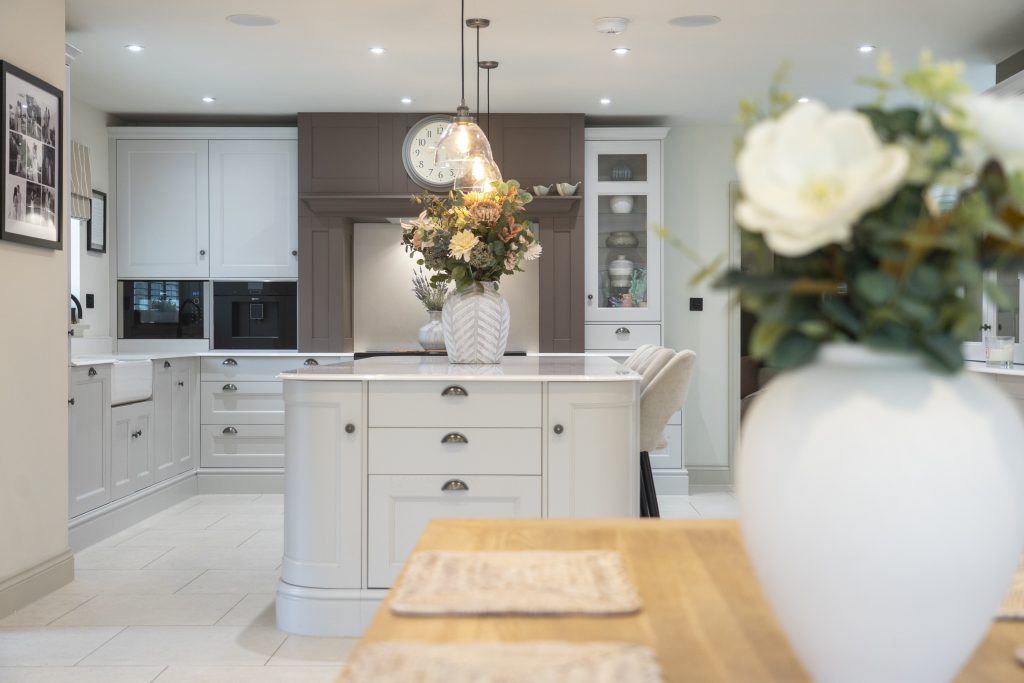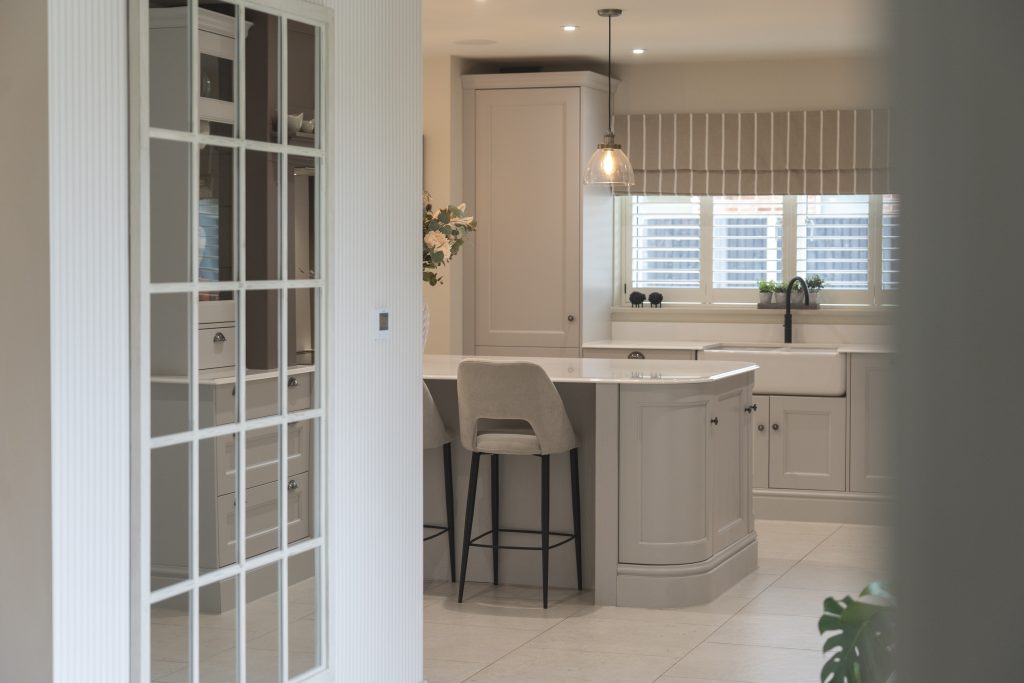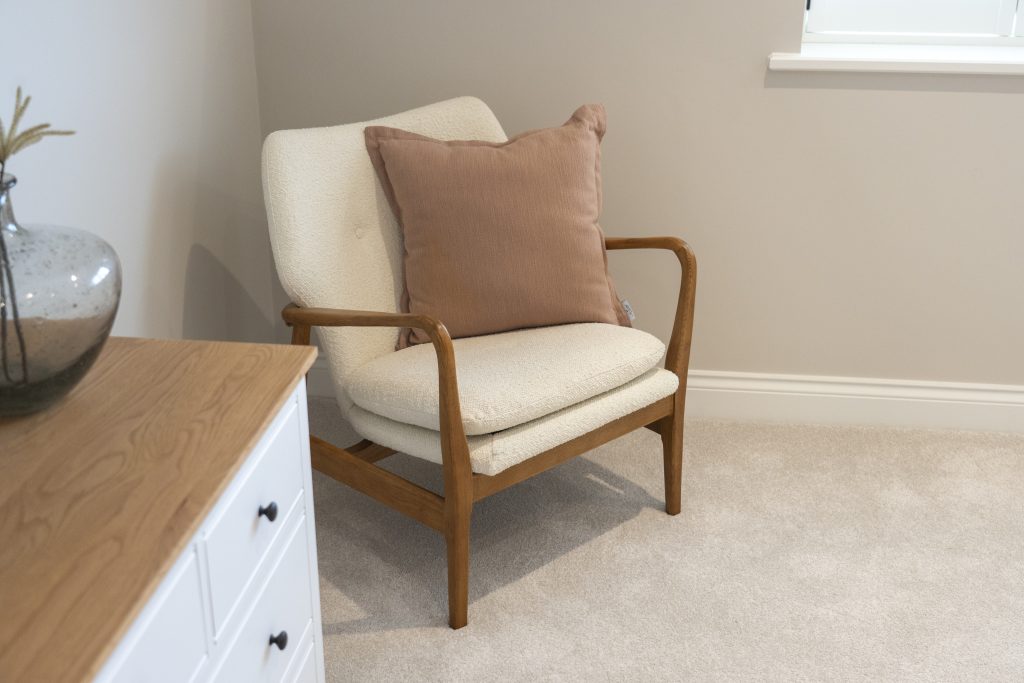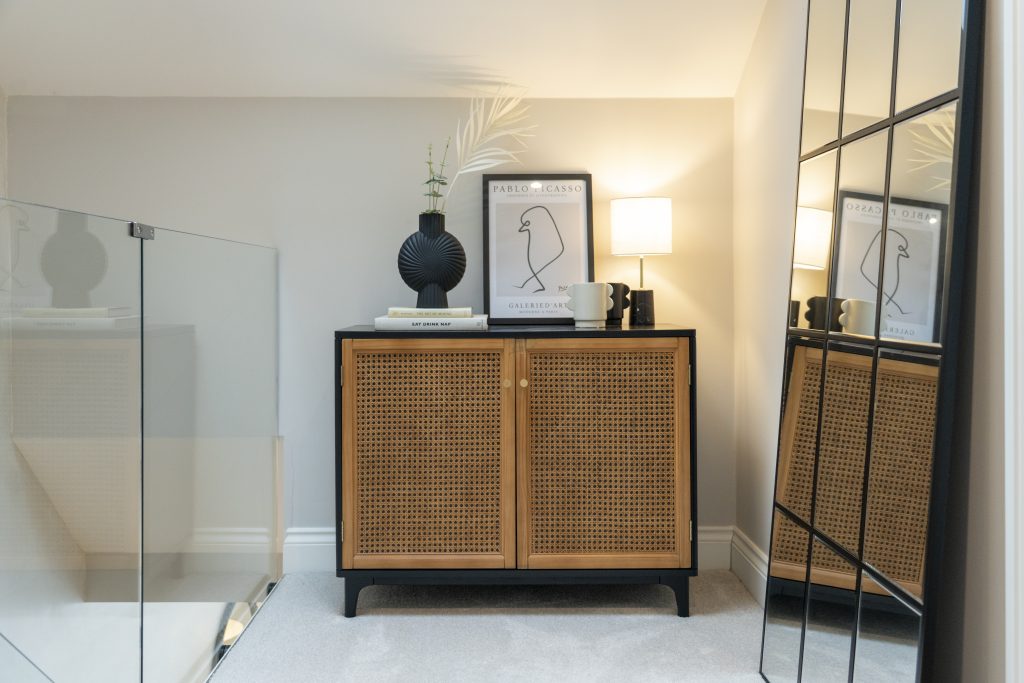As daylight fades and the evenings draw in, your home should be your haven.
As someone who is very much a spring/summer person, I feel a subtle sense of loss when the darker nights draw in and the warmth of the sun retreats. That’s why I make a conscious choice every year to turn my home into a space that lifts me rather than drains me, a sanctuary of texture, light, and comfort.
In my work, I see first-hand how the design of a space affects mood, energy, and even productivity. A home aligned with lifestyle and well-being doesn’t just look beautiful, it feels better.
Here are my top designer-led tips for making sure your home supports your mood as much as your aesthetic.

1. Maximise Light Exposure
Light has a profound effect on mood and fading daylight and grey skies are known triggers for seasonal affective disorder (SAD).
Position key furniture, a favourite armchair, work desk, or reading nook, near natural light sources.
Use mirrors strategically to reflect daylight into darker corners of your interior.
Choose layered window treatments: sheer for daytime light, heavier for evening warmth.
Large-format windows or glazed doors are ideal, but if you’re working within an darker space, optimise what you have and layer light thoughtfully.

2. Curate Uplifting Colour & Texture
Colour and materials do more than define style, they influence mood.
Accent neutrals with enriching tones: muted mustard, deep teal, forest green, or warm terracotta.
Incorporate tactile materials: wool throws, velvet cushions, and boucle upholstery invite comfort and relaxation.
In luxury interiors, this might translate into a velvet headboard, textured wall panelling, or a sculptural wood-grain sideboard, elevating both look and feel.

3. Layer Your Lighting Scheme
When daylight diminishes, artificial lighting becomes crucial, but it should feel considered, not clinical.
Build a three-tier scheme: ambient (general), task (reading, cooking, working), accent (art, architectural features).
Use warm-white, dimmable bulbs to adjust mood throughout the day.
In luxury interiors, I often specify architectural recessed lighting alongside designer pendants and table lamps with tactile bases, lighting that enhances both the space and your comfort.

4. Anchor the Home in Lifestyle Design
Your home is not just a show-space, it’s where your lifestyle plays out.
Consider how you spend your time during darker months: cosy evenings, relaxed mornings, or weekend lounging. Ensure your interiors support those routines.
Include functional, lifestyle features: a bespoke desk with integrated lighting, a snug reading nook, or a dining table that encourages lingering over meals.
In full-home renovations, I align architecture, joinery, lighting, and spatial flow to suit how clients actually live, not just how we think they should.

5. Personalise & Add Meaningful Details
Beauty alone isn’t enough. Mood-lifting homes reflect personality and connection.
Display objects that carry meaning, family photos, travel finds, or treasured artwork.
Curate rather than clutter: organised spaces reduce stress and allow design to breathe.
In luxury contexts, this may include custom storage, minimal visible technology, and surfaces that stay clean and confident.
Your home should make you feel a sense of place, calm, and belonging, not just visual appeal.

We can’t change the season, but we can change how we inhabit it. By consciously tailoring your home to respond to darker days, through light, colour, texture, layout, and meaningful details, you shift the mood from “surviving winter” to “thriving in it.”
If your home feels heavy right now, ask yourself does it lift me, or weigh me down? The luxury of a well-designed interior lies in its ability to do both, look beautiful and feel reassuring.